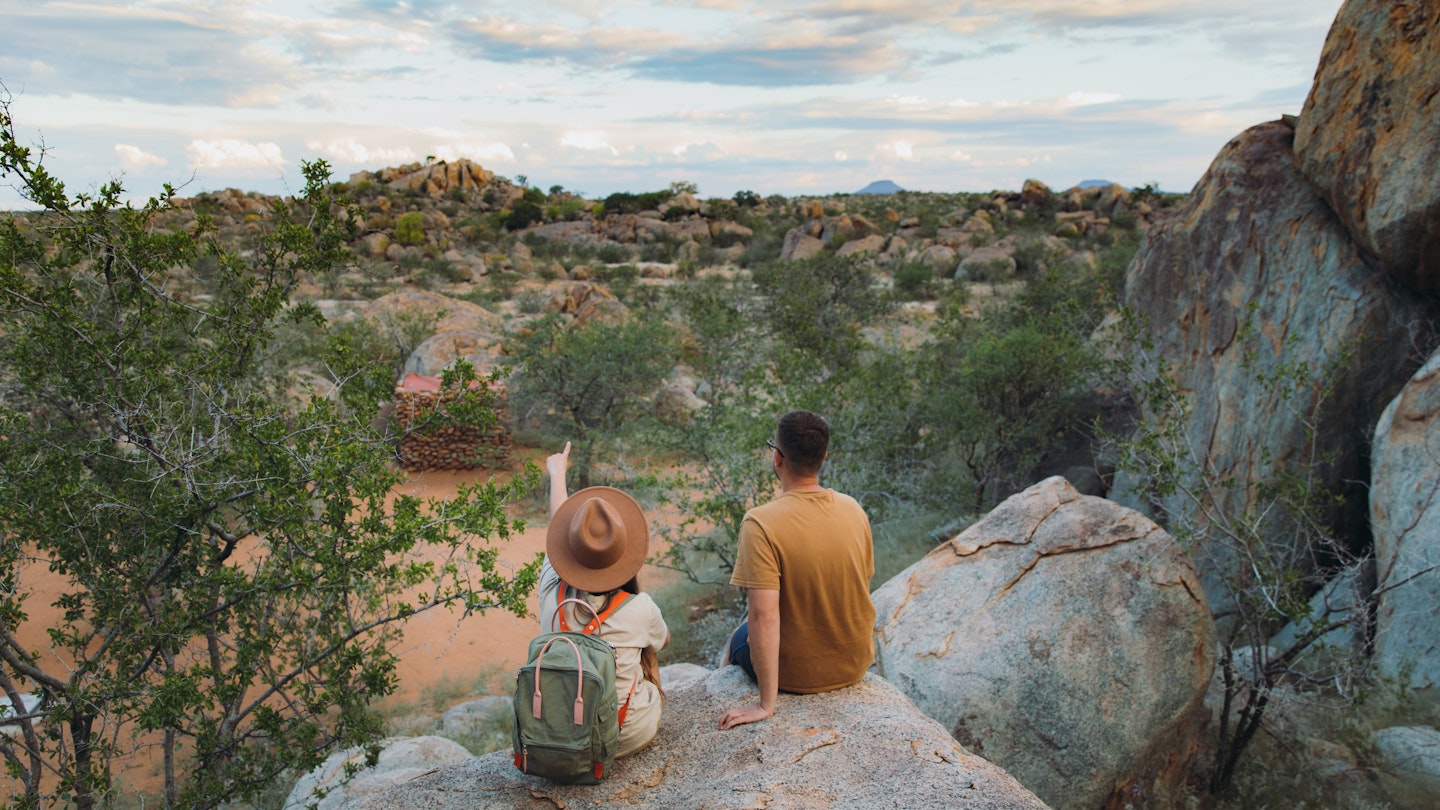Exploring Namibia on a Budget: Travel Tips and Daily Costs
Namibia boasts magnificent desert vistas, soaring dunes, a long, wild coastline, and excellent tourism infrastructure, making it a top destination for travelers. Its good road network and multitude of well-outfitted camping sites are ideal for independent explorers. However, while visiting, it’s important to manage costs effectively, especially considering the long distances and the high prices of some lodges. Below are our top tips for creating a budget-friendly Namibian adventure, along with an overview of daily costs.
Daily Costs in Namibia
Dorm bed in a backpacker’s hostel: from US$20
Basic room for two: from US$50
Managed campsite: US$150 per person
Self-catering apartment: from US$65
Coffee: from US$1.50
Lunch: from US$10
Dinner for two: from US$30
Beer at the bar: US$2
Small packet of biltong: US$2
4WD rental vehicle including rooftop tent: from US$100 per day
Average daily cost: US$110–350

1. Fly to South Africa and Take a Bus to Namibia
With limited direct flights into Namibia, it often proves cost-effective to fly into Johannesburg or Cape Town and continue your journey by bus. For instance, buses operated by Intercape offer a connection between Cape Town and Windhoek, with tickets starting at approximately US$65 one way. Booking early can also yield affordable flights into Windhoek from South Africa at prices around US$150.
2. Travel During the Low Season
December through March marks Namibia’s wet season, which can lead to significant savings on accommodation and tours post-holiday crowds. During this period, rates for lodges may drop by up to 40%. Although wildlife viewing is less optimal, birdwatching and enjoying the lush landscapes can enhance your experience. Ensure to plan excursions for the morning to avoid the intense afternoon storms.

3. Self-Drive Your Way Around the Country
Traveling in a group? Self-driving offers a safe and economical alternative to guided tours, especially given Namibia’s well-maintained road system. For instance, while a week-long guided tour may begin at around US$1,500 per person, a 4-person 4WD rental equipped for camping can start at US$650, plus fuel costs averaging about US$50 daily. With only 25% of roads paved, travel can be scenic on the gravel routes, though be sure to prepare for tire changes along the way.
4. Consider Namibia’s Shuttle Service
Developed in response to the pandemic and car rental shortages, Namibia’s shuttle service offers an affordable option for solo travelers. Covering numerous areas of interest, for about US$45 per leg, guests can travel safely and conveniently. However, you’ll need to arrange your lodging and excursions independently, making this a flexible choice for discovering Namibia.

5. Join a Scheduled Camping Tour
Scheduled guided camping programs are available, offering itineraries spanning from three to 15 days, typically around US$500 per person. This option is perfect for solo travelers eager to connect with others while sharing experiences, as logistics and costs for food are pre-arranged.
6. Utilize Namibia’s Campgrounds
Namibia features an extensive network of organized campsites that are clean, affordable, and equipped with good amenities. Camping not only saves you money but also offers a chance to meet fellow adventurers, share tips, and experience the enchanting landscapes and starry skies.
7. Balance Your Stay Between Budget Lodges and Self-Catering Apartments
With numerous budget lodges available from just US$25 a night, travelers can easily find clean and comfortable options. Additionally, self-catering apartments from US$65 provide a perfect transition between camping stays, allowing for relaxation and quick meal preparation.

8. Experience Affordable National Parks
Namibia’s national parks showcase stunning diversity, from expansive dunes to ancient salt pans. Although there is no national park pass available, entry fees remain low, approximately US$7 per person per day, with free entry for children under eight.
9. Stock Up on Groceries at the Start of Your Trip
Given that Namibia has limited food stops along its roads, it’s crucial to gather essentials such as snacks and water before getting on the road. Vehicles equipped with small refrigerators are common, making it easier to keep food fresh and minimize dining out.
10. Utilize Discounts for Children and Pensioners
In Namibia, many accommodations and entry fees offer discounts for children (typically under 12) and pensioners (60 and older). Always inquire about potential savings for these categories, and keep an eye out for student discounts too.
This article was last updated on Oct 19, 2023.





